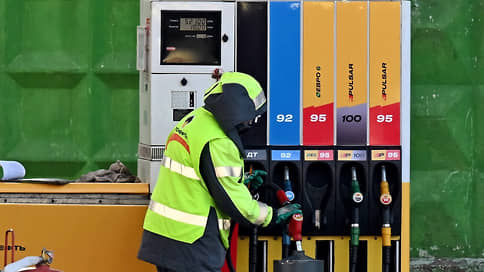Gasoline prices at St. Petersburg International Exchange have retreated from the highs at the beginning of the year
[ad_1]

The cost of gasoline on the St. Petersburg International Trading Exchange exchange has moved away from this year’s highs. AI-95, prices for which, amid a wave of active purchases, have soared by a quarter since the beginning of the year, have fallen in price by 2.5% since the end of last week, to 53.8 thousand per ton. The key trigger for the rise in fuel prices on the stock exchange was an accident at a gasoline unit at the Nizhny Novgorod Oil Refinery, the recovery of which could take months. Kommersant’s interlocutors do not consider the current price decline to be sustainable, given the start of the repair campaign at the refinery in March.
AI-95 gasoline in the European part of the Russian Federation has fallen in price for the third day in a row, according to data from St. Petersburg International Trading and Export Agency. Thus, the cost of AI-95 on February 13 decreased by 1.27%, to 53.78 thousand rubles. per ton. The price for AI-92 remained virtually unchanged, increasing only by 0.14%, to 45.9 thousand rubles. per ton, and remaining almost at the same level since the beginning of the month. AI-95 has fallen in price by 2.5% since the end of last week. However, since the beginning of the year it has risen in price by 27%, and this growth is unlikely to be recovered. The maximum values this year are more than 55 thousand rubles. per ton of AI-95 reached in early February.
Kommersant’s interlocutors associate the price correction with the end of the wave of rush fuel purchases that was noted at the beginning of the year.
At the same time, Kommersant’s sources do not expect a steady decline in quotes. As one of them reminds, the spring repair campaign at large refineries will begin in March, and oil workers will begin to actively accumulate reserves for this period. In addition, at the same time, fuel demand will begin to recover in the spring. On February 8, following the meeting, Deputy Prime Minister Alexander Novak instructed oil companies and the Ministry of Energy to “coordinate refinery repair schedules to meet demand during the beginning of the planting period and the season of growth in road transport.”
The price of gasoline began to rise sharply again in January amid accidents at the Nizhny Novgorod refinery of LUKOIL, due to which the catalytic cracking unit responsible for the production of high-octane gasoline failed. According to market participants’ expectations, it will be possible to restart it no earlier than the summer. In addition, market sentiment is influenced by drone attacks on Russian refineries, which prompts them to purchase fuel more intensively to avoid shortages.
During this winter, three large refineries suffered from drone attacks – export-oriented plants in Tuapse and Ust-Luga (owned by Rosneft and NOVATEK, respectively) and Volgograd Refinery LUKOIL, the latter’s primary processing unit was damaged. The Volgograd Refinery partially compensated for the reduction in refining due to the breakdown due to additional loading of other units. In the first week of February, Russian refineries reduced oil refining by 4% compared to January levels, to about 720 thousand tons per day.
The rise in gasoline prices in January worried fuel market regulators, who fear rising prices at gas stations on the eve of the Russian presidential elections. FAS actively demanded that oil companies reduce the cost of fuel in small wholesale quantities. In turn, the SPbIMEX exchange temporarily disconnected several participants from trading for “unfair practices.” The reason for regulatory intervention was the appeal of independent gas stations, which complained about difficulties in purchasing fuel on the stock exchange due to the use of robots.
The Russian market is now relatively stable; expectations of a noticeable further reduction in gasoline supplies have not yet been realized, says Sergei Kondratyev from the Institute of Energy and Finance.
However, he believes the current situation is unsustainable, given that petrol prices in the Mediterranean have risen 5-6% since the start of the month. Now Ai-95 (premium unleaded 10 ppm) is trading at $869–870 per ton versus $830 per ton previously, while the weakening of the ruble also pushes up the export alternative, increasing the profitability of sales abroad, the analyst recalls.
[ad_2]
Source link





